The classic tourist destination in Sardinia is the Costa Smeralda, the emerald coast, on the North-East of the island. Emerald is the correct word for the colour of the sea, interspersed with white sandy beaches and rocky hillsides. I stayed at a beautiful sea-view apartment in the tiny village of Porto Rafael, courtesy of Essentialitaly.com. This place had everything: attractive furniture with a cane sofa and coffee table, a washing machine, a balcony and private stairwell to the private beach. As a cook, my ideal place to stay has a kitchen, where I can play with all the fantastic local ingredients. To my delight there was a well-equipped blue-tiled kitchen with a peeler, good knives, local pottery ovenware, proper Italian coffee maker -stuff you actually need.
Porto Rafael, beloved by celebrities who wanted privacy, was built in the late 1950s. The buildings have an organic shape, all white washed domes and curves. My apartment had steps a green gate facing onto a tiny private beach leading to wooden pontoons. I could have spent all day on the terrace watching the gleaming yachts and the glittering sea, occasionally descending for a dip. Essential Italy even gave me a welcome bottle of Sardinian fizz which I somehow managed to guzzle by myself one evening.
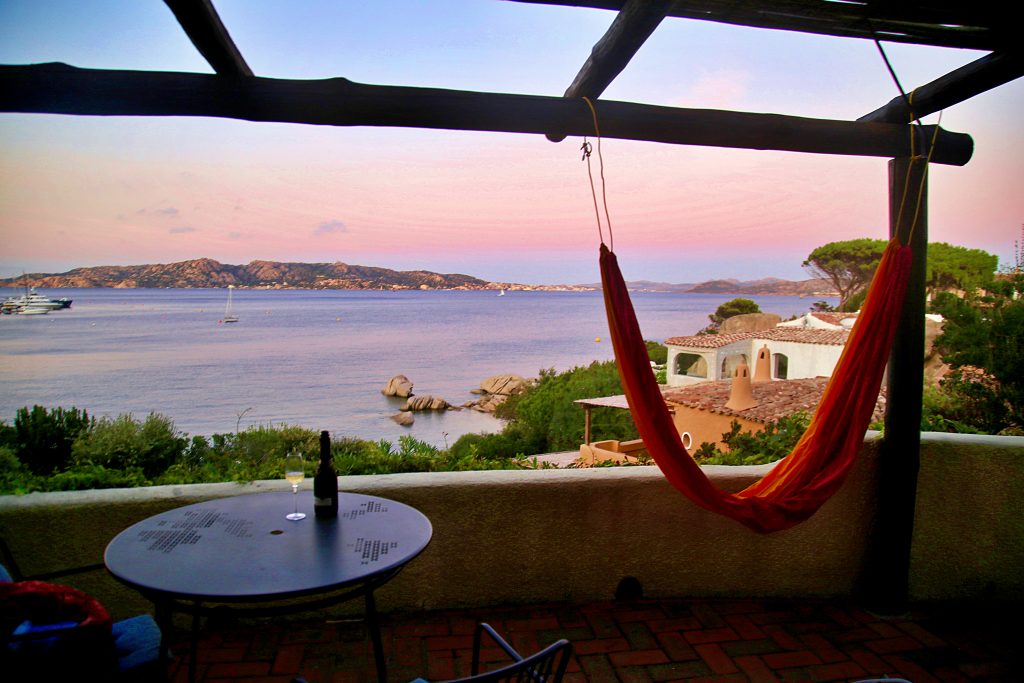
Sunset. I brought my own hammock, a lightweight silk one.
But I didn’t get to spend much time in the apartment as I wanted to learn how to sail. As I grow older, I become aware that time is running out, slipping away ever faster and I’m determined to check off a few items on my personal bucket list.
I only had time to take five lessons at a sailing school. Each lesson lasted an hour and 20 minutes. At first I thought it was too short, but in reality, I was quite tired after an hour or so, so the length of lesson was perfect. My teacher, Beppe, a long-limbed mainland Italian, spoke excellent English although he admitted he found it weird teaching English sailing vocabulary to an Englishwoman.
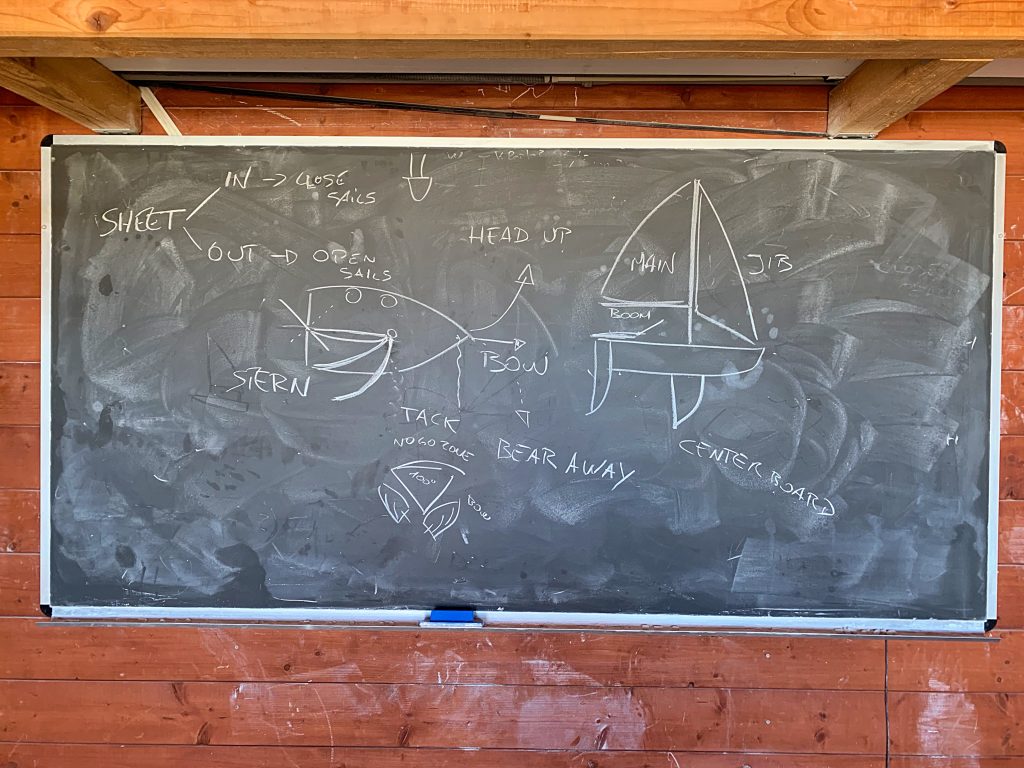
Sailing terms, on the blackboard

Beppe and me 
Lots of beautiful young men around for me to look at…
So I learnt the lingo: tacking (turning around), holding the tiller (steering), capsizing (overturning the boat) and the names of the ropes. Yes, every rope has its own name: Cunningham, Halyard, sheets, vangs. I literally learnt the ropes. Sails have names too: jib is at the front. It’s a whole world.
Learning to sail, I discovered, requires bodily strength. Using your body weight, leaning out when it ‘heels’, moving quickly and shifting from side to side isn’t easy. My thighs aren’t as strong as they used to be and when tacking, you need to be able to spring up, hold yourself low (or you get bashed by the boom) then throw yourself over to the other side all while maintaining control of the tiller and sheet. I got used to capsizing. I found the fibre glass dinghy boat heavy and hard to move.

I got an ‘ology’ 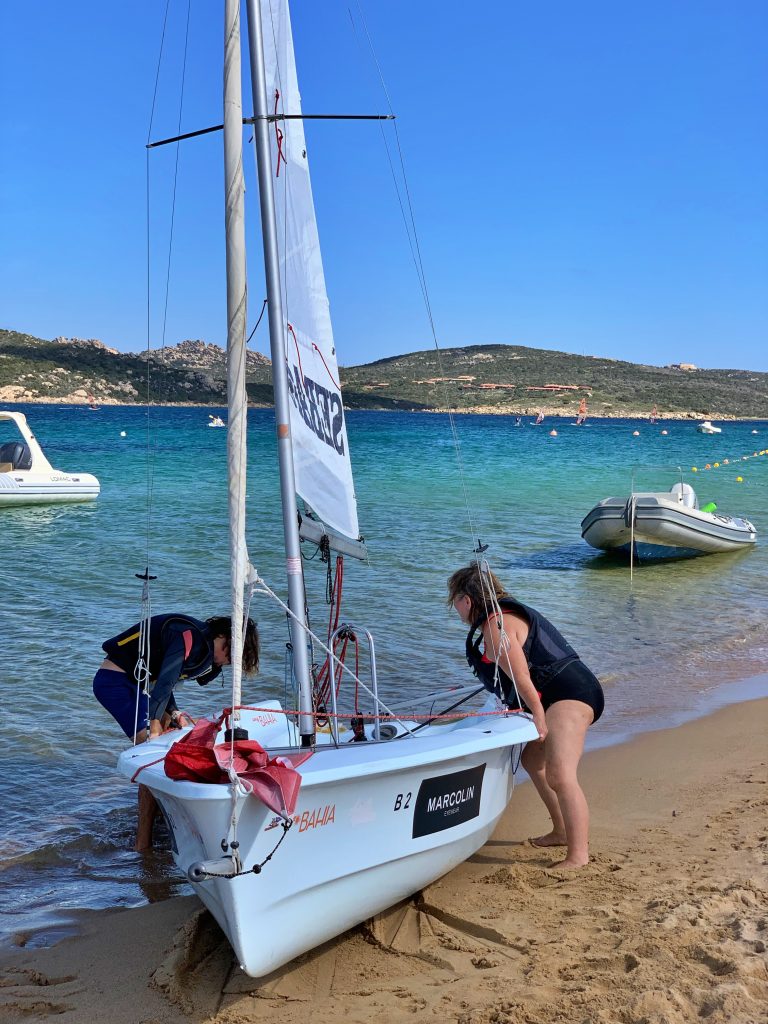
Cost: I paid 260 euros for lessons at the Sporting Club Sardinia at Porto Pollo near to Porto Rafael.
At the end of five lessons, I glumly realised I wasn’t going to go on any solo trips around the world any time soon. My skill level wasn’t enough to recreate Swallows and Amazons, let alone a Patrick O’Brian novel.
I wished I’d learnt sooner, when I was younger, and my legs were strong. So little time left and so much to do.
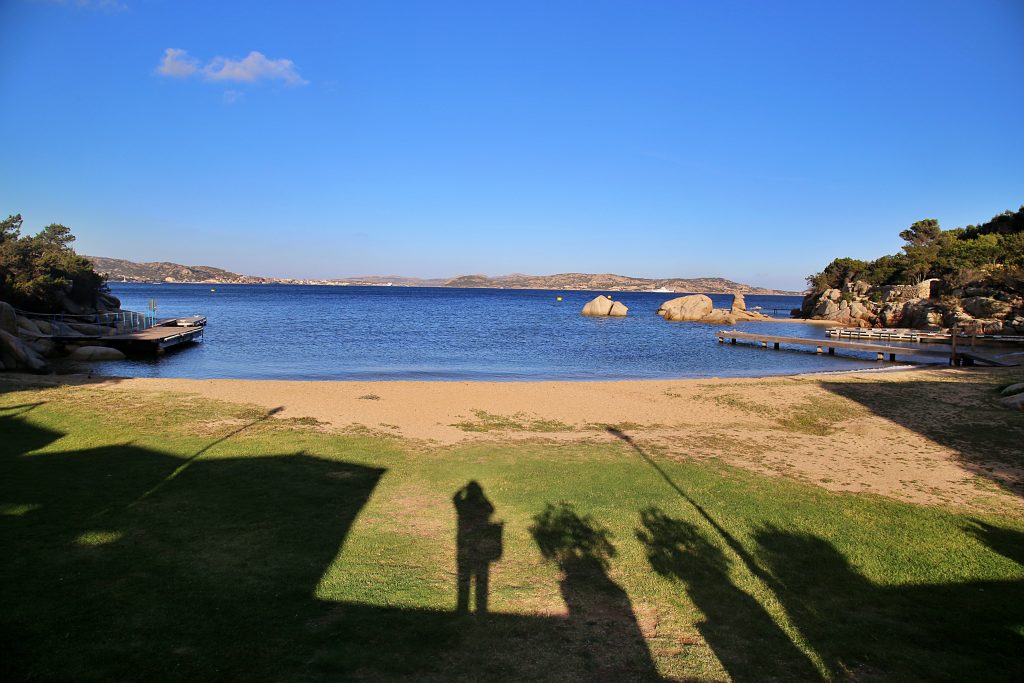

Ravioli with saffron, ricotta and tomato
Ingredients
- 450 g hard durum wheat flour or 00 flour, or 50/50 proportions of each flour. Leave some flour for dusting.
- pinch sea salt
- 225 ml tepid water
- generous slug Olive oil
- 500 g fresh tomatoes, diced
- pinch saffron, ground
- 1 tsp salt
- 300 g ricotta
- 2 tbsp salt for the cooking water
- fresh basil , garnish
Instructions
- Make the pasta dough. Or you can totally cheat by buying say, ricotta stuffed pasta and putting the tomato and saffron on top!
To make the ravioli:
- Mix the flour, salt and water in a food processor. Process until it looks like couscous.
- Remove from the processor and knead until it forms a ball.
- Cover tightly with clingfilm and leave to rest for at least half an hour.
- Cut the dough in half. Make sure the half you aren't using, is tightly covered with cling film.
- At this point you can refrigerate the dough until ready to use. The longer you rest the dough, the easier it is to work with. Do not freeze.
- Using a pasta machine, run it through. Then form an tongue of pasta, folded in half. Feed the open ended side through the machine as many times until you see a bubble and a pop form at the enclosed end. Then your pasta is ready to roll.
- Run it through (unfolded now) on the machine from 0 to 7. It'll get longer everytime. Toward the end you may need to cut your pasta tongue in half again. Cover the other half that you aren't rolling with a damp teatowel or clingilm to stop it drying out. If it gets too dry, wet your hands with water and sprinkle it over the dough or use a spray bottle.
- Finally lay out all your pasta, cover with damp tea towels or plastic sheets. Leave to 'cure'.
- With the second ball of dough, you can either roll that out or leave to ferment for a couple of days. This way you are adding a sourdough flavour.
To make the stuffing
- Fry the olive oil and tomatoes with the saffron and salt. Leave aside some to dot the top of the dish.
- Mix the tomato/saffron with the ricotta. Add seasoning.
Constructing the ravioli
- Using an 8 cm cutter, working with a small section at a time, leaving the rest covered, cut out circles.
- Using a teaspoon, put a small ball of the mixture inside a pasta circle.
- Press another pasta circle on top and seal the edges by wetting your fingers or using a pastry brush.
- Once formed, leave on a floured tray, not touching each other until all the raviolis are made.
- At this point they can be frozen on trays in the freezer, then removed, placed in a plastic bag in the freezer to be used later.
Cooking the ravioli
- Boil a large pan with salty water.
- Add the ravioli a few at a time until they float. Then drain.
- Continue until you have enough for your dish/guests/meal.
- Once cooked, add olive oil or butter, some diced tomatoes and sprigs of basil.
Accommodation courtesy of Essential Italy. They have properties all over Italy.
Flights courtesy of Aeroporto di Alghero. They fly direct from Luton, 45 minutes north of London.


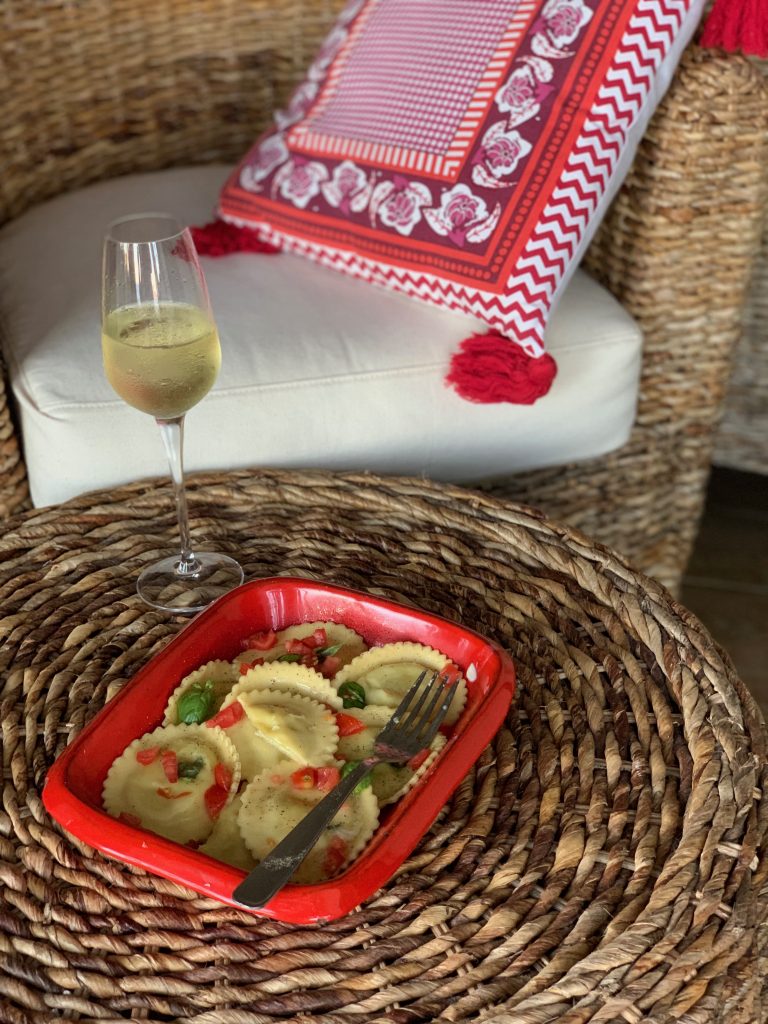

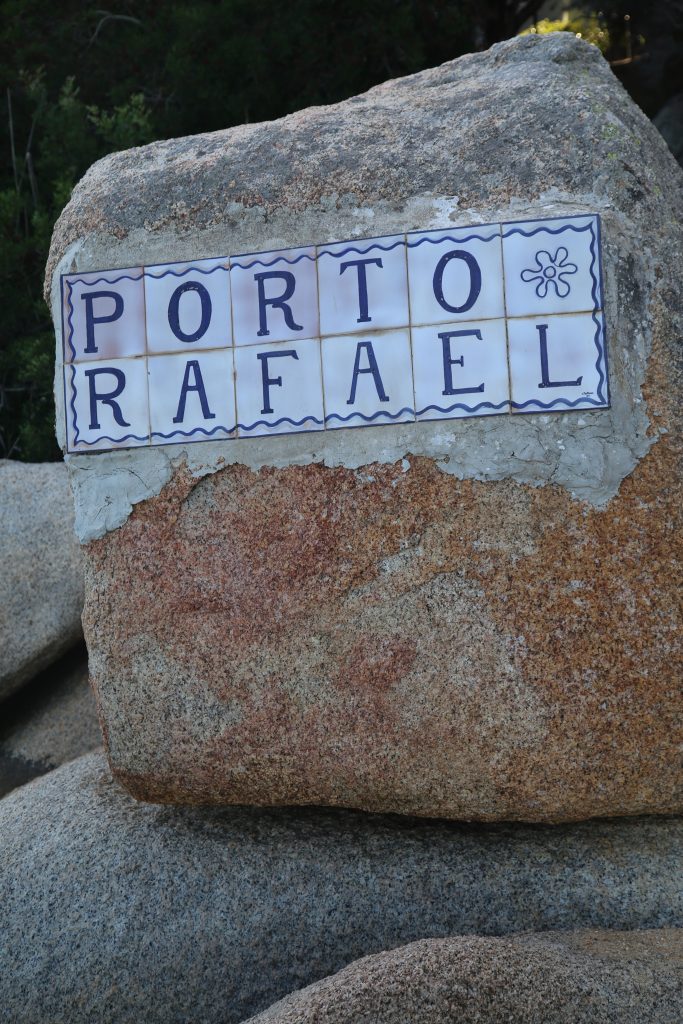



Leave a Reply